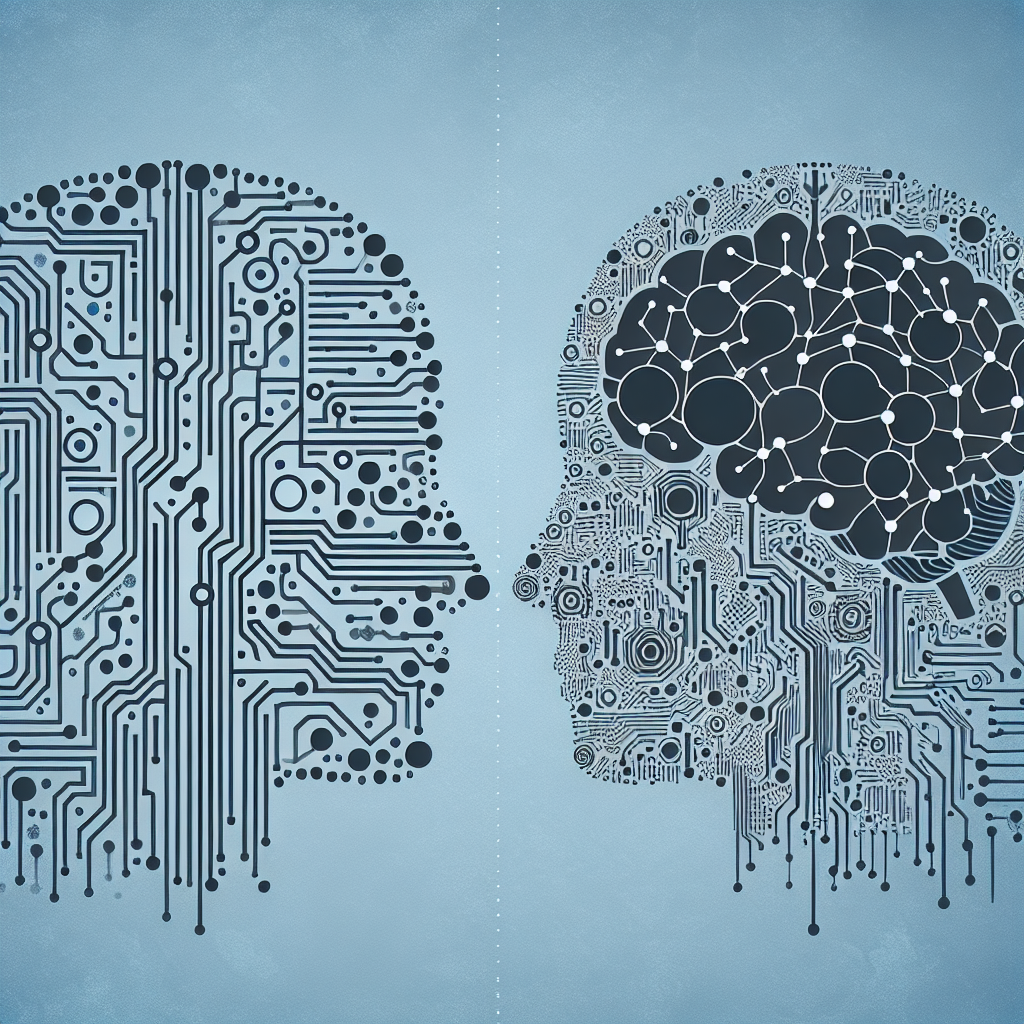Artificial General Intelligence (AGI) and human intelligence are two vastly different forms of intelligence, each with its own strengths and weaknesses. In this article, we will explore the differences and similarities between AGI and human intelligence, and delve into the implications of these differences for the future of AI and society as a whole.
AGI vs Human Intelligence: Exploring the Differences
One of the key differences between AGI and human intelligence is the way in which they are created. Human intelligence is the result of millions of years of evolution, shaped by natural selection and the environment in which humans have evolved. AGI, on the other hand, is created by humans, using algorithms and machine learning techniques to mimic the cognitive processes of the human brain.
Another key difference is the way in which AGI and human intelligence process information. Human intelligence is highly flexible and adaptable, able to learn from new experiences and apply that knowledge to a wide range of situations. AGI, on the other hand, is limited by the algorithms and data on which it has been trained, and may struggle to adapt to new and unexpected situations.
AGI also has the potential to be far more powerful than human intelligence in certain tasks. AGI can process vast amounts of data at incredible speeds, allowing it to make decisions and predictions that would be impossible for a human to make. However, AGI lacks the emotional intelligence and intuition that humans possess, which can be crucial in complex and ambiguous situations.
AGI vs Human Intelligence: Exploring the Similarities
Despite these differences, there are also many similarities between AGI and human intelligence. Both AGI and human intelligence are capable of learning from experience, adapting to new situations, and making decisions based on complex information. Both forms of intelligence also have the ability to recognize patterns and make predictions about the future.
Another similarity is that both AGI and human intelligence are capable of creativity and innovation. While AGI may lack the emotional intelligence and intuition of humans, it can still generate new ideas and solutions to problems, often in ways that humans would not have thought of.
Finally, both AGI and human intelligence are subject to biases and errors in judgment. Humans are prone to cognitive biases and irrational decision-making, while AGI can be biased by the data on which it has been trained. This highlights the importance of ethical considerations in the development and use of both forms of intelligence.
Implications for the Future
The differences and similarities between AGI and human intelligence have profound implications for the future of AI and society as a whole. As AGI continues to advance, it has the potential to revolutionize industries, improve efficiency, and solve complex problems that have long eluded human intelligence. However, the rise of AGI also raises concerns about job displacement, ethical dilemmas, and the potential for misuse of AI technology.
It is crucial that we continue to research and develop AGI in an ethical and responsible manner, taking into account the potential risks and benefits of this powerful technology. This includes ensuring that AGI is used for the greater good of society, and that safeguards are in place to prevent misuse and abuse of AI technology.
FAQs
Q: Can AGI ever truly replicate human intelligence?
A: While AGI has the potential to mimic certain aspects of human intelligence, such as pattern recognition and decision-making, it is unlikely to ever fully replicate the complexity and nuance of human intelligence.
Q: What are the ethical considerations of developing AGI?
A: Ethical considerations in the development of AGI include concerns about job displacement, privacy, bias, and the potential for misuse of AI technology. It is crucial that researchers and developers take these considerations into account when creating AGI.
Q: How can we ensure that AGI is used responsibly?
A: Responsible use of AGI requires transparency, accountability, and ethical oversight. It is crucial that safeguards are in place to prevent misuse and abuse of AI technology, and that ethical guidelines are followed in the development and deployment of AGI.
In conclusion, the differences and similarities between AGI and human intelligence highlight the potential of AI technology to revolutionize industries and solve complex problems, while also raising concerns about job displacement, ethical dilemmas, and the potential for misuse of AI technology. It is crucial that we continue to research and develop AGI in an ethical and responsible manner, taking into account the risks and benefits of this powerful technology.

